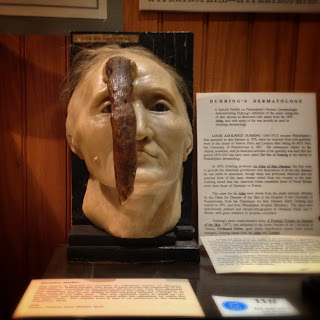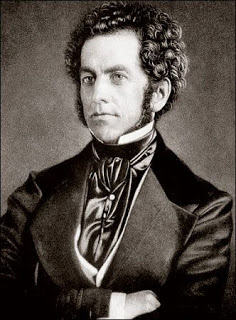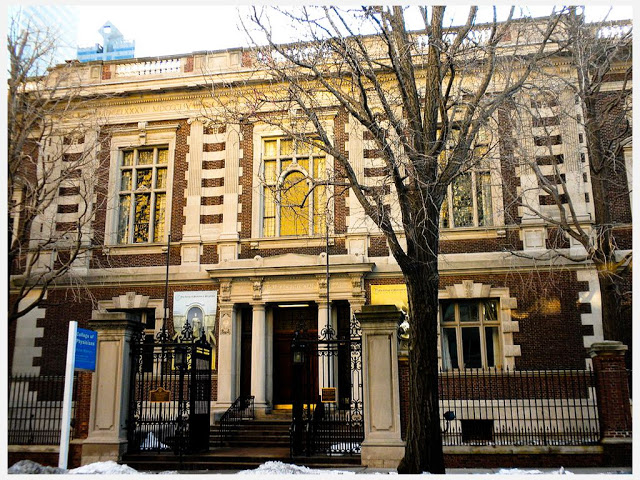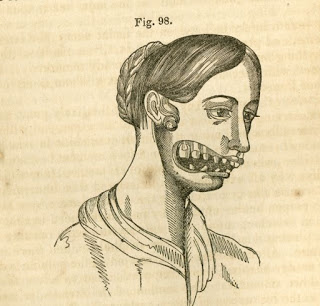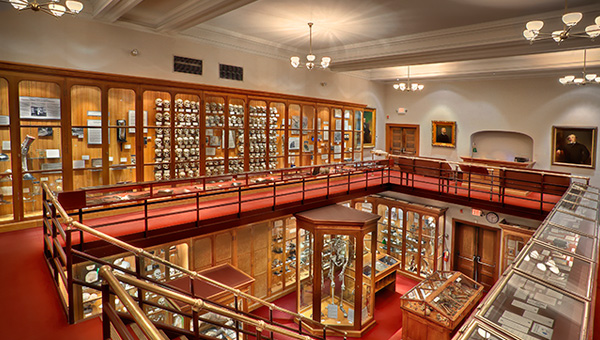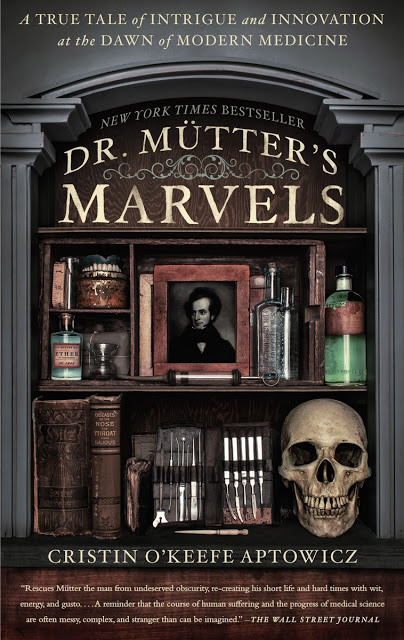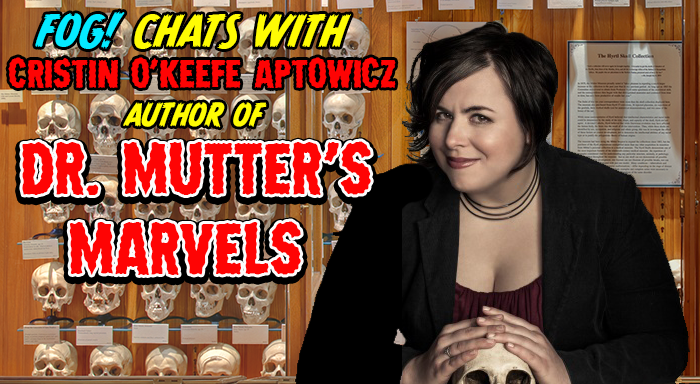 |
| Interview conduction by Stefan Blitz |
Imagine a time in medicine where a doctor who simply washed his hands and tools before a procedure was considered “finicking and affected.” Imagine a place where if an ill woman refused her doctor’s treatment of applying leeches to her uterus, it would be perfectly acceptable for him to scream, “Well, then, madam, I suppose you will die!” Imagine an era where all operations, no matter how brutal or invasive, were performed on patients who were wide-awake and screaming, and who sometimes even attacked their doctors—often with the surgeon’s own instruments.
This was the world that Dr. Thomas Dent Mütter was born into, and the one which he was destined to change.
In Dr. Mutter’s Marvels: A True Tale of Intrigue and Innovation at the Dawn of Modern Medicine, poet and author Cristin O’Keefe Aptowicz explores the previously untold told life story of the man with the famous name: a young, handsome and ambitiously brilliant surgeon whose talents in the operating room and lectures halls were unrivaled in his lifetime.
Although he only lived for 47 years, Mütter’s impact within medicine is still felt, and his legacy lives on with his enormously popular namesake museum. And now, with Dr. Mutter’s Marvels, his strange, inspiring and untold story can finally be shared.
In the Halloween spirit, author Cristin O’Keefe Aptowicz took some time to discuss Dr. Mutter, his work and her fantastic book.
FOG!: As a native Philadelphian, when were you first exposed to the Mutter Museum?
Cristin Aptowicz: Growing up in Philadelphia in the 1980s, visiting the Mutter Museum was a childhood rite-of-passage. Older siblings were always trying to scare you by telling you that one day you’d be taken to a museum that had skulls on the walls, and babies in jars, and diseased body parts every where. When I finally was taken their in the fourth grade, it totally lived up it it’s reputation!
But it sparked in me—and really in every kid in my class—a real fantastic curiosity, which is one of the goals of the museum.
I always describe it this way: if you were a kid and walked into a supermarket with your mother, and woman with a horn growing from the center of her forehead walked in, your mother would tell you to look anywhere BUT at the women with the horn!
But the Mutter Museum takes that same kid, literally shows them a woman with a horn growing her head and says, Come closer! Take a good look! Ask questions! How did this happen? Why does it happen? Did it hurt? How do we treat it today? How did we treat it back then? It invites kids—and adults!—to be curious, ask questions and learn about what’s normal, but showcasing what is extremely unusual. It’s an utterly engaging experience, and it is no surprise why it has become the most popular science museum in the country for the 18-to-35-year-old demographic!
For people who aren’t familiar with Dr. Thomas Dent Mutter, who was he?
Most people aren’t familiar with Thomas Dent Mutter! In fact, he doesn’t even have as much as a Wikipedia page!
But I hope Dr. Mutter’s Marvels helps to correct that.
If people have heard of the name Mutter, it is likely because of the Mutter Museum, which is Philadelphia’s (in)famous museum of 19th century medical oddities. But before his incredible collection of “unusual pathological specimens” became the basis of his namesake museum, Mutter made his name a brilliant, compassionate and outspoken mid-19th century doctor who specialized in radical reconstructive surgery on the severely deformed in a time before anesthesia, so all of his patients were awake during his complex procedures.
Though he died young, his influence as a surgeon and a professor are still seen in modern medicine today, and his surgeries and humanist, patient-centric philosophies were so ahead of his time that they are still being used today.
You previously wrote an unproduced screenplay about Mutter; what was the genesis of that and how did that evolve into a book.
The Mutter screenplay created in the hopes of winning an Alfred P. Sloan fellowship, which was being offered my senior at NYU. I was paying my own way through college (Pro Tip: NYU may not be the least expensive of choices if you are paying your own way; luckily they were very generous with me with regards to scholarships and funding), and I was always on the lookout for fellowships and grants that would offset the cost of my education. The fellowship was for “The Best Play or Screenplay Based on the Life of a Scientist or Scientific Discovery,” and looking into the origin story of the Mutter Museum—which, for as many times as I had been there as a student, I’d never known—seemed like a good idea!
The screenplay wouldn’t win that Sloan Fellowship, but would eventually win one thru the Hamptons International Film Festival. It would win several other screenwriting awards, and though I took numerous meetings in holiday, it remained (and remains!) unproduced. I realized that the screenplay was a bit of tough sell because it was an expensive screenplay to make (period piece featuring a lot of severely deformed people) about a man who was largely unknown to the general public. If only more people knew Mutter’s story, I thought…. and that was the first time when I began to consider very seriously the idea of turning Mutter’s story into a nonfiction book.
Your writing background is primarily that of a poet, what were the challenges of writing such a detailed non-fiction book?
I am a lifelong reader—and lover—of nonfiction. I love researching and uncovering long-forgotten stories. It makes me feel like Indiana Jones! However, the research that needed to be done for this project relied on me living in Philadelphia for an extended period of time, and focusing exclusively on the project.
So for a year straight, I applied to numerous grants, fellowships and residencies to see if I could find funding that would allow me to take leave of my job to work on the research for this book, and in the summer of 2010, I was very grateful to find out that I had received the 2010-2011 ArtsEdge Writer-in-Residency position at the University of Pennsylvania, which gave me an apartment and studio space in West Philadelphia for a calendar year, and allowed me to focus solely on the project. The bulk of the research for the book was done during that year!
I was also lucky to receive a National Endowment for the Arts Literature Fellowship and an Amy Clampitt House residency to further support the writing of the book. With these opportunities in place, I was able to focus solely on the writing of the book, and the rest is history—I suppose, literally!
Was the museum supportive to you and the book?
Absolutely! In fact, I would say they gave me unprecedented support. They allowed me full access to their museum and archives, gave me numerous letters of support for every funding opportunity, grant and fellowship application I could find.
Then, when the book was going into layout, they provided me with every image I requested to use within the book (there are over 6 dozen images in Dr. Mutter’s Marvels!) Both the hardcover and paperback launch events were held at the museum, and I always make sure to swing by whenever I am in town to sign copies for the museum’s award-winning gift shop.
I recently found out the Dr. Mutter’s Marvels is the best-selling item in their gift shop—beating out even their famed plushie mega-colon! Dreams really do come true!
What was the most interesting thing about Dr. Mutter that you came across in your research?
Oh man, the whole era was fascinating.
I mean, it was a real wild, wild west of medicine during Mutter’s time. Doctors were brawling with each other in the streets, in the press, in faculty meetings, and even during each other’s surgeries. They were so close to the hallmarks of what we consider modern medicine, and yet, they were still nasty debates about even the most basic things: recovery rooms, anesthesia surgeries, whether to clean your hands and tools prior to surgery, etc…
The book is filled with incredible stories, but the one I find myself sharing the most is the story of the girls with Phossy Jaw.
Phossy Jaw was a common medical condition among working class girls who worked in Philadelphia’s matchstick factories. The condition would start as a toothache or painful swollen gums, but soon the girls had large, weeping abscesses over their cheeks, with wounds so deep they went straight to the bone.
And as if that condition—which again was so common, it earned a nickname!—and the inevitable death it would cause wasn’t horrible enough, because of the chemicals the girls ingested daily through their work, the exposed jawbones of the now-deformed girls would glow greenish-white in the dark!
Why do you think that people have an interest in medical oddities and why do you think Mutter and the museum are important in the history of science?
Great question! I think the answer is twofold:
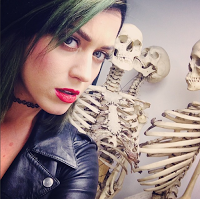 |
| Which one is Katy Perry? |
First, for the general public, the Mutter Museum is a science museum that has the “curiosity-based” angle to it.
Other science museums, I feel, are geared more towards children—How does the heart work? What is evolution?—which is great, and serves a real purpose.
But the Mutter Museum is a more sophisticated way to approaching sharing science with the public!
It simply shows you hundreds of incredible provocative—and REAL—artifacts and specimens, and lets you, the viewer, chose what you want to look at and learn more about! I think creating that curiosity in people—scientific inquiry in non-scientists, like myself—is such a gift, and one the Mutter Museum provides with gusto!
Secondly, the museum with its collection is still an incredible important and vital asset to medicine today. People ask me often why we don’t see the disfigurements and deformities today that you can see in the museum.
The answers is complicated: we trust doctors more today, so early detection and treatment is easier. Also, understanding how diseases and deformities occur has helped us better understand how to prevent them, especially via nutrition (think: pre-natal vitamins) and sanitation. Lastly, labor laws in the U.S. have helped us prevent some of the catastrophic disfigurements seen in the 19th century (ahem… Phossy Jaw!!).
But while we have resolve so many of these issues in 21st century America, they still remain a problem in the third word. So scientists and doctors still come the museum to examine its holdings so they can better understand how to treat and prevent diseases, disfigurements and deformities they are seeing in third world countries today!
What are your upcoming projects?
I am currently at work on my proposal for my next historical nonfiction project! Right now the topic is under wraps, but I can share that it is another undiscovered story, and it is rather gory! Feel free to follow me on Twitter (@coaptowicz) or like my fanpage on Facebook (Cristin O’Keefe Aptowicz) to find out more information when the proposal (hopefully!) sells this winter!
What are you currently geeking out over?
Of course, I am so happy that The Knick is returning! It is a brilliant series, and though it takes place 50 years after Mutter’s era (so the “barbaric” medicine seen on the show would have looked like a futuristic Narnia to Mutter by comparison!), I still adore and deeply respect how medicine—and the 1900s—is showcased by the brilliant Steven Soderbergh.
I am also obsessed with Hamilton, the Lin Manuel Miranda music on Broadway about the life of founding father Alexander Hamilton! I saw it when it was at the Public, and was just knocked out by how smart, thorough and human it was! I bought the (brilliant, brilliant, brilliant!) soundtrack the hot second it was available on iTunes!
Somewhat relatedly, I am excited to read Sarah Vowell’s latest book, Lafayette in the Somewhat United States, about Hamilton’s friend and contemporary, the Marquis de Lafayette. I adore her work, and her smart, muscular, witty and modern take on history.
And lastly, I love the website Black Nerd Problems (blacknerdproblems.com) which constantly posts thoughtful, hilarious and spot-on commentary about pop culture through the eyes of “nerds of color.” Follow them on Twitter (like I do!) to get the latest updates, and thank me later!


































































































